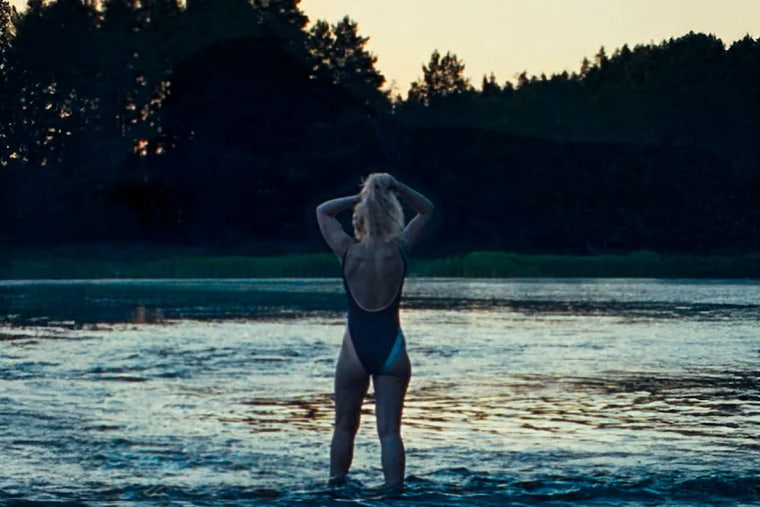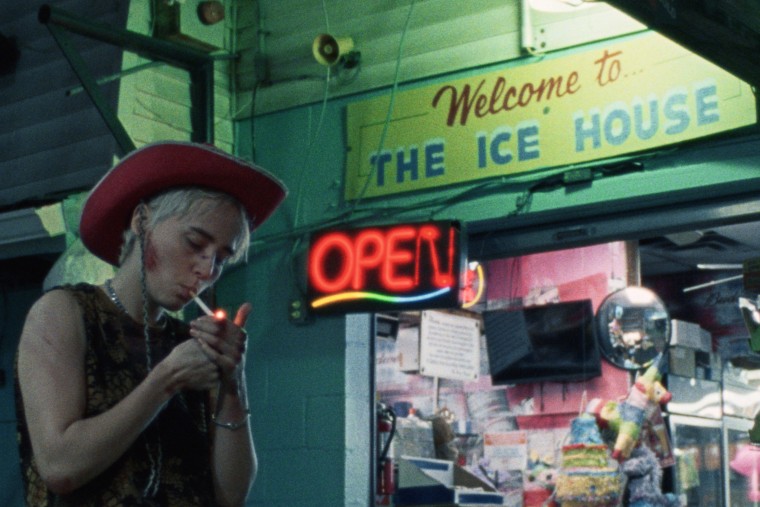For more than three decades, Newfest, New York’s premier LGBTQ film festival, has featured and celebrated the year’s best queer films, with past years’ screenings including classics like “High Art” (1998), “Hedwig and the Angry Inch” (2001) and “Carol” (2015).
This year, Newfest’s fall film fest, which follows two mini-festivals held in the spring and summer, starts Thursday and runs through Oct. 21. Screenings will take place in-person at theaters in Manhattan and Brooklyn as well as virtually. Notably, Arizonans will have free virtual access to a selection of this year’s films in the wake of the cancellation of the long-running Phoenix LGBTQ film festival that organizers said was “in direct response” to an executive order signed by President Donald Trump.
The 37th edition of Newfest’s signature event will be bookended by the opening-night screening of “Blue Moon” — Richard Linklater’s portrait of lyricist Lorenz Hart, starring Ethan Hawke, Andrew Scott and Margaret Qualley — and a closing-night celebration for “Christy,” David Michôd’s biopic of boxer Christy Martin, starring Sydney Sweeney in the title role. It will also showcase four distinct centerpiece films, including “Come See Me in the Good Light,” which documents the poet Andrea Gibson’s final days, and the drag-queen-inspired “A Deeper Love: The Story of Miss Peppermint.”
 Andrea Gibson and Megan Falley in “Come See Me in the Good Light.”Apple TV+
Andrea Gibson and Megan Falley in “Come See Me in the Good Light.”Apple TV+
But it’s not just the headliners that are drawing in viewers, with highly anticipated titles like Kristen Stewart’s “The Chronology of Water” and offerings from up-and-coming creatives scattered throughout the 13-day festival. What unites these screen works, beyond their focus on LGBTQ individuals, themes and audiences, is their defiant messaging, according to Newfest’s director of programming, Nick McCarthy.
“What we want to do is be inspired by the work that we are seeing — to really reflect the moment as opposed to prescribe a moment,” McCarthy said. “It’s been exciting this year to see so many projects that show, I think, perseverance within our community, but also the concept of breaking through.”
McCarthy said that, among this year’s submissions, there was a consistent focus on narratives that celebrate resilience and a rebellious spirit, with many of the titles specifically exploring “the positive and powerful role that art plays in our lives, especially when there’s a blitzkrieg of misinformation.”
 “The Chronology of Water.”Scott Free Productions
“The Chronology of Water.”Scott Free Productions
A “theme that really came together was the idea of how vital of a role artists play in our culture, in our lives and in our community,” he said, discussing how art provides society with a critical lens through which to interpret propaganda, as well as a place to share affirming and truthful portrayals. “Of course, when you look at artists throughout history and in contemporary spaces — from musicians to writers to filmmakers to performers to drag artists, down to painters — there is such a presence of queer identity and perspective.”
Those themes manifest in unique ways throughout the program. In the visually striking documentary “Second Nature,” which is narrated by Elliot Page, filmmaker Drew Denny explores how LGBTQ identities have survived in and shaped the animal kingdom. And in the festival’s retrospective offerings, including “All About Eve,” “Born Yesterday” and “Sunset Boulevard,” resilience is a badge of honor for the queer and queer-coded heroines of yesteryear. Many of the year’s selections also lean into humor, absurdism and even mockery to get their messages across.
In “Lesbian Space Princess,” which will have its New York debut at Newfest on Wednesday, an insecure teenager with a royal pedigree, Saira, overcomes her fear of leaving home and charts an intergalactic voyage to save her callous ex-girlfriend, Kiki. Along the way, Saira encounters a problematic ship, a gay-pop runaway and a group of “Straight White Maliens” holding Kiki captive — all of whom build her confidence in one way or another.
 “Lesbian Space Princess.”We Made A Thing Studios
“Lesbian Space Princess.”We Made A Thing Studios
The boldly titled animated feature was dreamed up by South Australian creatives Leela Varghese and Emma Hough Hobbs, who were inspired by low-budget anime and Adult Swim’s mature cartoons, and bring their unique, women-driven perspective to the art form — as well as blaze a trail for other queer animators. In other words, Hobbs said, the film’s “raison d’être is to create space for nerds” who aren’t “dude-bro frat guy” types.
“I just grew up being a queer, nerdy little nerd, and just feeling so uncomfortable in real-world spaces like conventions, movies, video stores. You just couldn’t go anywhere and express interest in this stuff without immediately feeling gatekept,” she said. “So the idea is, if we make space in gay space, we’re making space in the real world as well.”
Hobbs, who won a Teddy Award along with Varghese at this year’s Berlin International Film Festival, said she feels like they’ve been successful in that based on going to screenings where there’s “hundreds of queer people physically together in a room, having a good time and feeling safe.” And as far as carving out space in the “real world,” the creators, who have long been interested in poking fun at “incel culture,” are satisfied for now that their movie has the power to unsettle certain corners of the internet.
Annapurna Sriram’s “F—toys,” this year’s U.S. centerpiece film and a South by Southwest winner, also uses satire and genre to deliver a provocative message, one that is largely aimed at the entertainment industry. Sriram wrote the script in 2017 as a vehicle for herself, after dreaming for years of playing “the sentimental slut in a campy cult film” and feeling limited by “trending racial stereotypes and tropes,” according to the film’s press notes. But it wasn’t until going the independent route, and deciding to direct the feature herself, that she was able to bring it to life.
“We made this film completely through independent means and that process has meant we have only had to make compromises due to our budgetary and infrastructural limitations,” Sriram said. “The film gets to exist as true outsider art, singular and honest.”
 A scene from “F—toys.”Trashtown Pictures
A scene from “F—toys.”Trashtown Pictures
In “F—toys,” which will screen at Newfest on Friday, Sriram plays a part-time sex worker who finds out she’s been cursed and sets off on a kind of hero’s quest to secure the funds and a sacrificial lamb needed to change her luck. For cinephiles, this feature, shot on 16-millimeter film, will likely feel like a successor to John Waters’ dynasty of filth, down to its setting in the fictional urban sprawl of Trashtown. But it also takes inspiration from other button-pushing cinematic works — from “Nights of Cabiria” to “Cléo from 5 to 7” and “Pee-wee’s Big Adventure” — that use theatricality, melodrama and, often, queerness to subvert expectations.
“Films that follow in the tradition of political satire, absurdism and maximalism maintain a level of irreverence and joy, despite exploring serious themes and critiquing harmful aspects of culture,” Sriram said of delivering social commentary through a campy film. They’re “approachable and inclusive to all audiences, without becoming wrought or self-serious.”

